Nostalgia on Tuesday: Blitz destruction
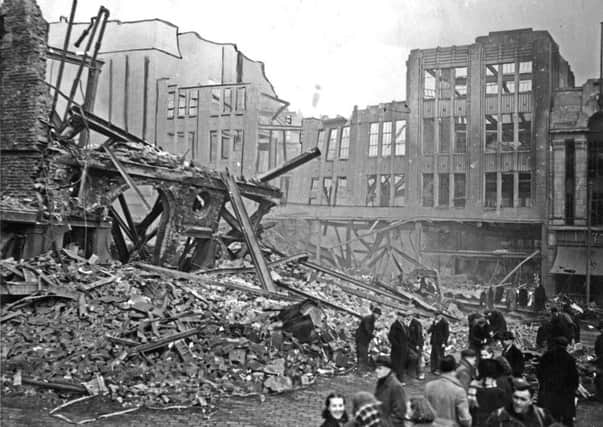

In the 1850s John Marples purchased a wine and spirits business that had been established in 1820 in Fitzalan Square. Eventually it grew into one of the largest and best known of its kind in the city. It was mainly due to Marples’ initiative that the firm, now known as John Marples & Company, erected a handsome block of buildings that overlooked Fitzalan Square and High Street.
Seven storeys high, the building, a popular venue at the city’s heart and full every night, comprised a concert hall, residential suites, a grand lounge, bars and rest rooms as well as many cellars.
Advertisement
Hide AdAdvertisement
Hide AdThe Marples was one of the first buildings to be hit in the Sheffield Blitz during the Second World War when the Luftwaffe sent over 300 bombers in an attempt to raze Sheffield’s vital industries. The Germans’ main mission in Sheffield was to destroy factories along the Don Valley but, perhaps mistakenly, they dropped high explosives at the heart of the city instead.
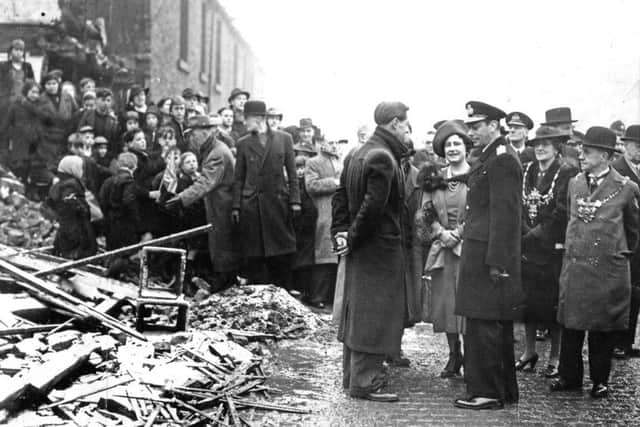

The alert sounded at 7pm on Thursday, December 12, 1940. Customers in the Marples Hotel, everyone considering the building to be stout and sturdy, remained there enjoying themselves. In fact the manager reassuringly pointing to the ceilings –piled one on top of each other – said to customers: ‘No bomb could get through all that lot’.
As bombs crashed all around, the Marples regulars sang popular songs of the day...songs like It’s a Lovely Day Tomorrow. But for many of them, there was to be no tomorrow.
At about 9.30pm, bombs caught buildings in Campo Lane and Vicar Lane, destroying them. At 10.50pm the C&A Mode department store opposite took a direct hit. Debris flew into the Marples, shattering its windows. Several soldiers who were among the customers tended to the injured with their stock of field dressings, everyone now huddled into the building’s cellars feeling protected by the imagined strong cellar roof.
Advertisement
Hide AdAdvertisement
Hide AdAt about 11.44pm, the Marples Hotel received a direct hit from a 500lb Luftwaffe bomb, probably detonating after plunging through the upper floors and hitting the ground floor.
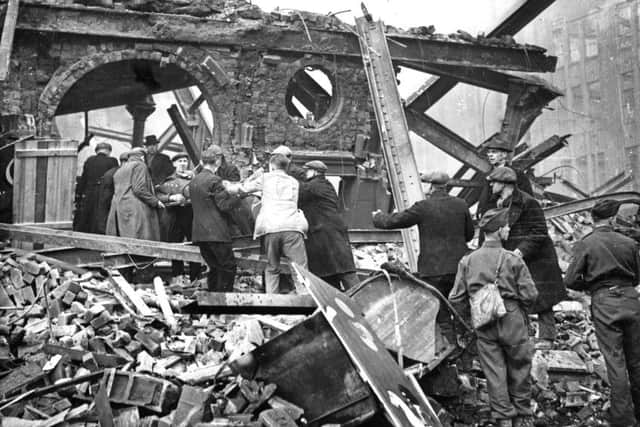

The hotel was completely destroyed, its floors collapsing into tons of rubble about 15ft high, several witnesses claimed. An adjoining building, belonging to a seed and nursery business, and shop run by Fisher, Son and Sibray was also destroyed.
Because assistance was urgently required in other areas of the city, rescue work at the Marples did not begin until around 10am. The all- clear had only been sounded at 4am.
Seven male survivors were reached several hours later. They related stories of how they had spent frightening hours trapped in the cellars struggling to breathe amid choking smoke and dust.
Advertisement
Hide AdAdvertisement
Hide AdOne of the survivors was soldier Lionel Ball, who had arrived that night in Sheffield from Bristol and had gone for a drink in the Marples.
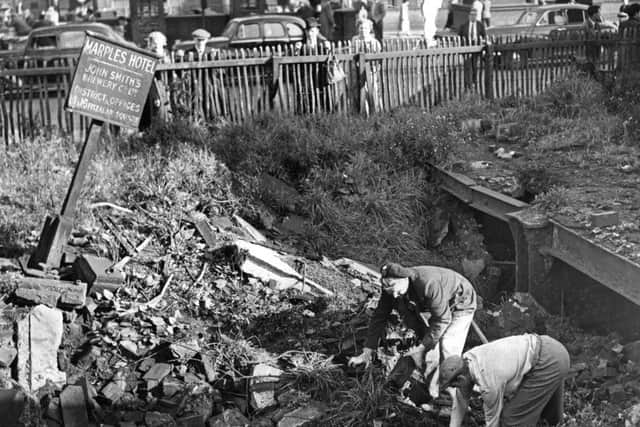

He said that once the air raid became so intense it felt unsafe to leave the hotel so he went down into the cellar bar, known as the Tudor Lounge, along with about 60 to 80 others.
When the bomb hit the C&A he was one of the soldiers who took some of those injured into the bottle stores adjoining the cellar. As the Marples took a direct hit, Ball states that the place seemed to collapse except the roof of the part of the cellar where he was sheltering along with seven others. One man later died from his wounds while Ball and others attempted to dig themselves out using whatever they could.
No one was found alive in the Tudor Lounge, thus Ball and the six others probably only survived after moving into the bottle stores shortly before that fateful blast.
Advertisement
Hide AdAdvertisement
Hide AdThe death toll was about 70 – the highest single loss of life during the Blitz, which claimed about 600 lives in the December attacks. The Marples site was excavated over the ensuing weeks and more than 1,000 tons of rubble taken away.
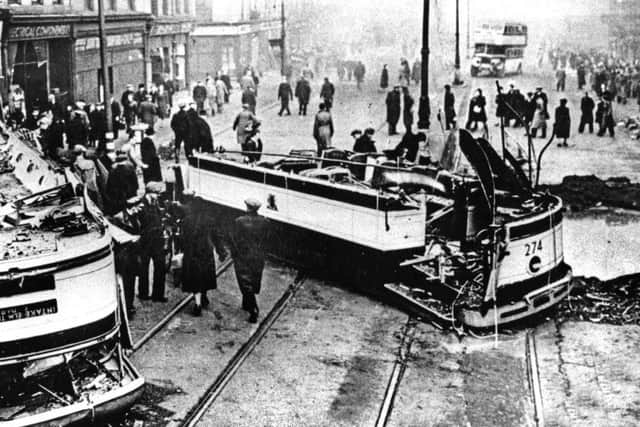

In total 64 bodies were recovered. The partial remains of six or seven others were found. Forty-six were identified mostly through their belongings like identity cards, rings, watches and handbags.
One man who cheated death on that night was world billiards champion Joe Davis. Due to play an exhibition match at the Marples, he could not make the trip by train from Hull because of damage to the rail network.
Preliminary work for the rebuilding of the hotel began in October 1956. L Matthews, managing director of the firm which was clearing the site, said: “It is a remarkable coincidence we should have been chosen to do the work, for on the night of the ‘blitz’, we were called out under emergency regulations to assist in clearing up at this very spot.”
Advertisement
Hide AdAdvertisement
Hide AdFor years we put a wreath on the site and so did other people, said a spokesman for John Smith’s Tadcaster Brewery Company. He was speaking on February 5, 1957, after plans were approved for a new Marples Hotel at Sheffield Brewster Sessions.
On the evening of April 30, 1959, the new Marples Hotel stood tall, white and majestic at the High Street/Fitzalan Square corner and opened its doors for the first time. The dead from 1940 were remembered in a bronze plaque that was unveiled by the Lord Mayor of Sheffield, Alderman John W. Holland. The plaque was just inside the High Street entrance to the hotel.
The Marples premises closed as a pub in May 2002 and have since been occupied by another business.